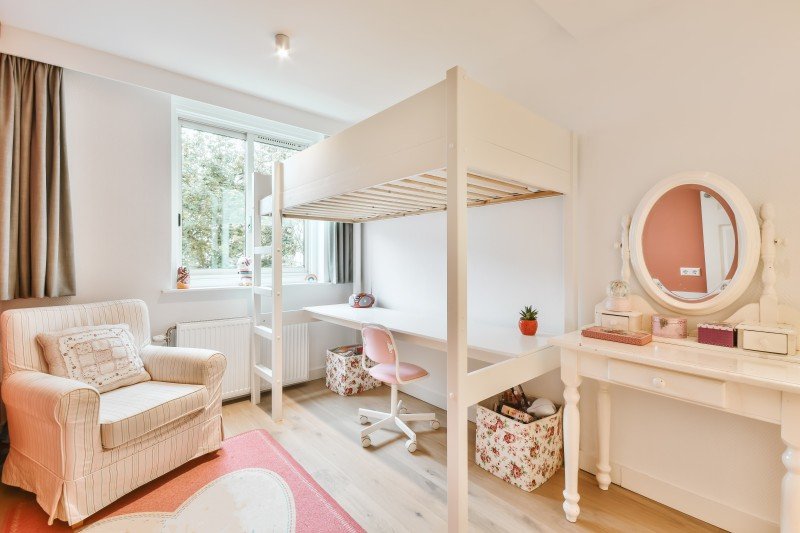A Comprehensive Guide to Children's Bunk Beds: Styles, Benefits, and Safety Considerations
Bunk beds have ended up being a popular choice for households wanting to take full advantage of space and offer a fun sleeping environment for children. With their special design, they use an imaginative and useful option for shared bedrooms, playrooms, and even guest accommodation. This article checks out the different styles of children's bunk beds, their benefits, security factors to consider, and responds to some regularly asked concerns.
The Allure of Bunk Beds
Children's bunk beds are more than simply space-saving structures; they are likewise an entrance to daring dreams and imaginative play. Below is an in-depth examination of their various benefits.
Benefits of Bunk Beds
- Space-Saving: Bunk beds effectively use vertical space, making them a perfect choice for smaller sized rooms.
- Lively Design: Many bunk bed designs include slides, camping tents, and themed components, stimulating creativity and excitement.
- Partner Sharing: Bunk beds are perfect for siblings sharing a space or accommodating slumber parties.
- Versatile Use: Some models can be separated into 2 private beds, providing versatility as kids grow.
- Storage Options: Many bunk beds feature built-in drawer storage or shelves, even more boosting their functionality.
Styles of Children's Bunk Beds
The variety of bunk beds available today deals with various choices and needs. Below is a summary of some popular designs.
| Design | Description | Best For |
|---|---|---|
| Requirement Bunk Bed | A traditional style including one bed stacked above another. | Siblings sharing a space. |
| Loft Bed | Comparable to a bunk bed without the bottom bunk, enables an office or play location below. | Limited space for play/desk. |
| L-Shaped Bunk Bed | Two beds arranged in an L-shape, typically with additional areas for storage or play. | Distinct room designs. |
| Twin Over Full | A twin bed over a complete bed, accommodating various sleep needs. | Growing kids and teens. |
| High Sleeper | Stands even greater than a loft bed, generally including a desk or play area below. | Older kids needing more play/desk space. |
| Tent Bunk Bed | Bunk beds with a canopy or tent-like structure, creating a cozy, fun space. | Active and creative kids. |
Key Features to Consider
When picking the right bunk bed for children, the following functions are worth considering:
- Material: Bunk beds can be made from wood, metal, or a combination. Each has its unique aesthetic and durability.
- Weight Capacity: Always validate the weight limit of the bunk bed to ensure it can accommodate your kids securely.
- Security Rails: Ensure the leading bunk has durable rails to avoid falls.
- Ladder Security: A well-designed ladder ought to provide simple and safe access to the upper bunk.
- Ending up: Ensure any finishes are non-toxic and safe for children.
Security Considerations
Safety is critical when it concerns kids's bunk beds. The following guidelines ought to be adhered to:
- Age Appropriateness: Generally, kids under six years of ages should not sleep in the upper bunk due to safety threats.
- Sturdy Construction: Ensure the frame and products are strong and can support the weight without sagging.
- Regular Maintenance: Periodically check for loose screws, bolts, or other components that may require tightening up.
- Clear Play Area: Keep the area around the bunk bed without toys and barriers to decrease tripping hazards.
Setting Rules for Safe Use
Developing guidelines for bunk bed usage will help guarantee safety:
- Limit Jumping and Climbing: Children should be encouraged versus jumping from the leading bunk and climbing up on the sides.
- Supervising Sleepovers: Monitor young guests while they are using the bunk bed for the first time.
- Inform on Ladder Use: Teach how to utilize the ladder safely, highlighting the significance of facing the ladder when climbing up or down.
Regularly Asked Questions
1. What jaylaani.top is proper for a child to sleep in the top bunk?
Most producers recommend that children ought to be at least six years old to sleep in the upper bunk. This standard is developed to mitigate the risk of falls.
2. Can bunk beds be customized?
Yes, numerous manufacturers offer customizable choices, including colors, products, and extra functions like drawers or desks.
3. Are bunk beds safe for weight?
Bunk beds have weight limits, usually ranging from 200 to 400 pounds, depending on the design and product. Always inspect the maker's specifications.
4. How do I preserve and clean up a bunk bed?
Frequently look for loose parts, keep the bed tidy by cleaning down surface areas, and guarantee the bedding is fresh to promote a safe and sanitary sleep environment.
5. Can bunk beds be separated into private beds?
Many bunk beds come with a choice to separate them into 2 private beds, offering long-term versatility.
Children's bunk beds are more than mere furniture; they are a practical, flexible, and creative part of a kid's room. With various designs available and numerous safety factors to consider to remember, moms and dads can select the ideal bed that fits their space, satisfies their kids's needs, and imparts a sense of experience. By comprehending the advantages, designs, and security measures connected with bunk beds, households can develop a delightful and secure sleeping environment for their children. Whether for brother or sisters sharing a room or space-saving services, bunk beds remain a beloved option for numerous families.

